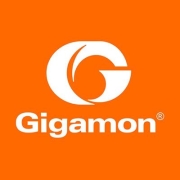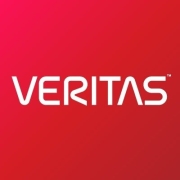Advanced Threat Protection safeguards organizations from sophisticated cyber threats by using next-gen technologies like machine learning and behavioral analysis. It ensures thorough protection against potential attacks, offering comprehensive security intelligence and dynamic defense mechanisms.
By focusing on detecting and responding to advanced threats, ATP systems provide organizations with tools to identify, mitigate, and neutralize threats in real time. These solutions often integrate with existing security infrastructure to elevate an organization's security posture, offering enhanced visibility and control over potential risks. The focus on early detection and rapid response capabilities helps protect critical data and systems from emerging threats.
What are the critical features of Advanced Threat Protection?In finance, ATP solutions help protect against phishing and malware targeting sensitive customer data. Healthcare organizations use these solutions to secure patient records and comply with privacy regulations. Retailers employ ATP to guard against cyber threats during payment processes, ensuring customer trust and safety.
By leveraging ATP, organizations can confidently navigate complex threat landscapes. These solutions provide indispensable security against advanced attacks, helping maintain operational integrity and data safety for businesses in any sector.
| Product | Market Share (%) |
|---|---|
| Palo Alto Networks WildFire | 10.7% |
| Microsoft Defender for Endpoint | 9.0% |
| Fortinet FortiSandbox | 8.7% |
| Other | 71.6% |
















































Typical security tools, like antivirus software and firewalls, rely on matching the signatures of known malware and blacklisting known threat sources. But these measures are not completely effective in stopping advanced persistent threats. These days, attackers use a variety of attack vectors and methods that can bypass traditional protection.
The cyber threat landscape has changed drastically in recent years. Most companies were faced with a sudden need to move to the cloud and manage remote workforces. This moved the perimeter to protect to the endpoints, which became the first line of defense for cybersecurity programs. It means endpoints require advanced security solutions to protect them.
ATP solutions provide this level of protection. They combine several next-generation security technologies to identify attacks early in their life cycles, which can actually break the attack chain and prevent further similar threats.
Advanced Threat Protection integrates seamlessly with existing security solutions by complementing and enhancing them. It typically uses APIs to connect with systems like firewalls, intrusion detection systems, and security information and event management (SIEM) platforms. This integration allows ATP to provide real-time threat intelligence and advanced analytics across your network, increasing your overall security posture without the need for replacing current solutions.
Can ATP protect against zero-day threats?Yes, ATP solutions are specifically designed to identify and mitigate zero-day threats. They use advanced techniques, including behavioral analysis and machine learning, to detect anomalies that may indicate a zero-day attack. By analyzing patterns and identifying suspicious activities, ATP can take preventive actions even when a specific threat signature is not available, thereby offering protection against previously unknown vulnerabilities.
What role does machine learning play in ATP solutions?Machine learning plays a critical role in ATP solutions by enabling the system to adapt to evolving threats. It allows ATP to learn from previous incidents by analyzing vast amounts of threat data to identify patterns and predict potential future attacks. This adaptive learning process means that the more data ATP processes, the better it can preemptively identify sophisticated attacks, thereby enhancing your security environment's effectiveness.
Are ATP solutions scalable for small businesses?Yes, ATP solutions are scalable and suitable for businesses of all sizes, including small businesses. They can be customized according to the specific needs and budget constraints of smaller enterprises. Many ATP vendors offer cloud-based services, providing small businesses with access to high-quality threat protection that can be scaled up as needed without requiring substantial investments in hardware or personnel.
What are the key features to look for when choosing an ATP solution?When choosing an ATP solution, look for features such as real-time threat detection, integration capabilities with existing security infrastructure, AI and machine learning tools, and the ability to detect and react to zero-day threats. Other essential features include robust reporting and analysis tools, cloud compatibility, and a user-friendly interface. Ensure the vendor offers support and regular updates to keep your security solution aligned with emerging threats.